
09-01-2026 10:08
 Blasco Rafael
Blasco Rafael
Hola, en el mismo habitat que la anteriorRetamaDia

08-01-2026 21:22
 Blasco Rafael
Blasco Rafael
Hola, He recogido esta muestra de Orbilia sobre Re

07-01-2026 10:24
 Danny Newman
Danny Newman
Pezicula sp. on indet. hardwood Appalachian Highl

07-01-2026 22:22
 Danny Newman
Danny Newman
Tatraea sp. on indet. hardwood The Swag, Great Sm

07-01-2026 17:29
 Marc Detollenaere
Marc Detollenaere
Dear Forum,On a barkless Populus I found some smal

10-11-2021 17:33
 Riet van Oosten
Riet van Oosten
Add-on topic http://www.ascofrance.com/forum/7059

07-01-2026 10:05
 Danny Newman
Danny Newman
cf. Chaetospermum on XylariaCosby Campground, Grea

02-01-2026 17:43
MARICEL PATINOHi there, although I couldn't see the fruitbody, I

04-01-2026 17:45
 Stephen Martin Mifsud
Stephen Martin Mifsud
I was happy to find these orange asmocyetes which
Thorough inspection yielded only one fruit body. I did not have a second attempt at microscopy, but given the specific shape of the spores and the fact that the asci contain only four spores, I identify this asco as Hyaloscypha lachnobrachya.
Would anyone be so kind to confirm that!
Thank you,
François Bartholomeeusen
Diameter fruit body: 155 µm
Asci: 34 x 5 µm; IKI +; Croziers +
Spore: (15.3) 15.4 - 16.1 (16.6) × (1.7) 1.9 - 2.5 (2.6) µm; Me = 15.8 × 2.2 µm; Qe = 7.2

Unfortunately, I do not have the publication you cited, could you send it to me?
I added two detailed photos of the spores. I forgot to mention that the fruit body was completely white.
Best regards,

I would like to finalise my item of 9 September on the forum. Mr Baral's splendid publications provided a lot of information but some uncertainties remain.
Calycellina is evident by the presence of a brown basal ring and the presence of light refracting vacuoles in excipulum, hairs and parphyses.
The high percentage of oil droplets in the spores (> 50%), the width of the spores and the absence of a stipe leaves two candidates namely C. flaveola and C. ulmariae. The substrate and texture of the extal excipulum complicate the choice. The only fruiting body I found was on a fallen leaf and the textura is difficult to determine. Perhaps the textura is 'oblita' after all? What are your thoughts?
Many thanks,
François





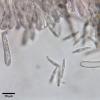


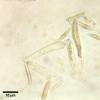
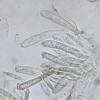
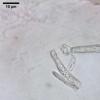
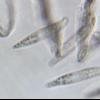

 AF-Is-Calycellina-ulmariae-een-oplossing-0001.docx
AF-Is-Calycellina-ulmariae-een-oplossing-0001.docx